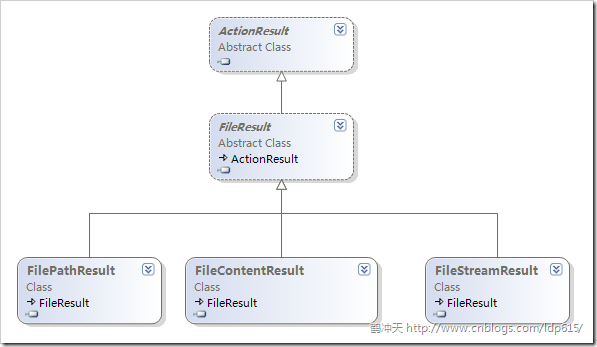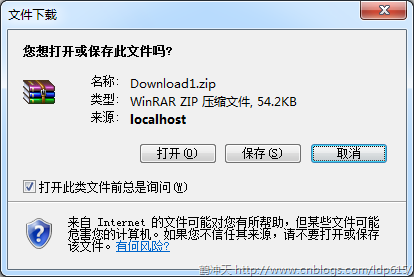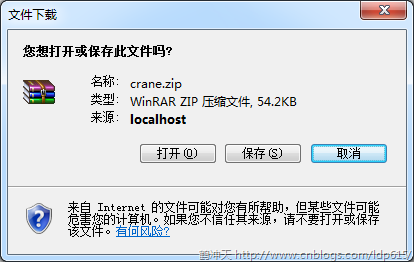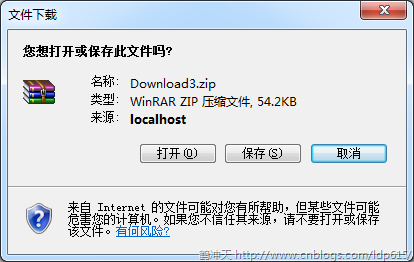在 Controller 中我们可以使用 FileResult 向客户端发送文件。
FileResult

FileResult 是一个抽象类,继承自 ActionResult。在 System.Web.Mvc.dll 中,它有如上三个子类,分别以不同的方式向客户端发送文件。
在实际使用中我们通常不需要直接实例化一个 FileResult 的子类,因为 Controller 类已经提供了六个 File 方法来简化我们的操作:
FilePathResult File(FileContentResult File(FileStreamResult File(Stream fileStream, string contentType, string fileDownloadName);
FilePathResult
FilePathResult 直接将磁盘上的文件发送至浏览器:
1. 最简单的方式
public ActionResult FilePathDownload1()
{
var path = Server.MapPath("~/Files/鹤冲天.zip");
return File(path, "application/x-zip-compressed");
}
第一个参数指定文件路径,第二个参数指定文件的 MIME 类型。用户点击浏览器上的下载链接后,会调出下载窗口:

大家应该注意到,文件名称会变成 Download1.zip,默认成了 Action 的名字。我们使用 File 方法的第二个重载来解决文件名的问题:
2. 指定 fileDownloadName
public ActionResult FilePathDownload2()
{
var path = Server.MapPath("~/Files/鹤冲天.zip");
return File("g:\\鹤冲天.zip", "application/x-zip-compressed", "crane.zip");
}
public ActionResult FilePathDownload3()
{
var path = Server.MapPath("~/Files/鹤冲天.zip");
var name = Path.GetFileName(path);
return File(path, "application/x-zip-compressed", name);
}
我们可以通过给 fileDownloadName 参数传值来指定文件名,fileDownloadName 不必和磁盘上的文件名一样。下载提示窗口分别如下:


FilePathDownload2 没问题,FilePathDownload3 还是默认为了 Action 的名字。原因是 fileDownloadName 将作为 URL 的一部分,只能包含 ASCII 码。我们把 FilePathDownload3 改进一下:
3. 对 fileDownloadName 进行 Url 编码
public ActionResult FilePathDownload4(){ var path = Server.MapPath("~/Files/鹤冲天.zip"); var name = Path.GetFileName(path); return File(path, "application/x-zip-compressed", Url.Encode(name));}